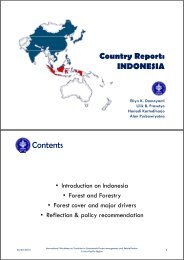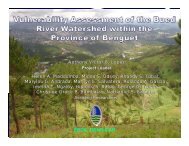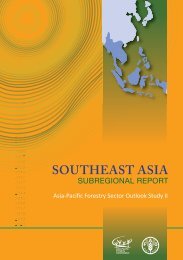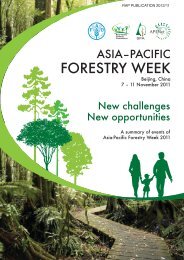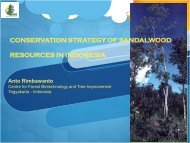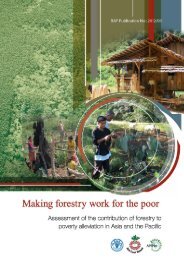Community guidelines for accessing forestry voluntary carbon ... - FAO
Community guidelines for accessing forestry voluntary carbon ... - FAO
Community guidelines for accessing forestry voluntary carbon ... - FAO
Create successful ePaper yourself
Turn your PDF publications into a flip-book with our unique Google optimized e-Paper software.
<strong>Community</strong> <strong>guidelines</strong> <strong>for</strong> <strong>accessing</strong> <strong>for</strong>estry <strong>voluntary</strong> <strong>carbon</strong> markets<br />
11. Analysis of remote sensing imagery and geo-referencing of sites;<br />
12. Conducting a <strong>for</strong>est inventory (including sample plot<br />
establishment);<br />
13. Engaging third party validators; and<br />
14. Project registration fees (depending on the standard used).<br />
At later stages of the project, when it is time to verify <strong>carbon</strong> credits<br />
or deliver them to investors, another set of costs will occur <strong>for</strong> the<br />
following:<br />
• Verification of all aspects that require certification, <strong>carbon</strong><br />
stocks, social and biodiversity indicators. Costs can be reduced<br />
if verification against different standards are combined in one<br />
audit, e.g. VCS and CCBA together.<br />
• Brokerage fees (normally between 1-3 percent of the traded<br />
value).<br />
• Registration and issuance fees. These depend on the size of<br />
the project in terms of volume of <strong>carbon</strong> credits.<br />
It is impossible to provide cost estimates <strong>for</strong> these activities because it<br />
depends on the complexity of the project, as well as whether it is located<br />
in a country where reliable, good quality services can be acquired from<br />
local experts. This can lower the costs quite significantly compared to<br />
hiring consultants from abroad.<br />
Types of finance<br />
Financing projects through civil society organizations, including<br />
environmental and religious NGOs, is the most common source of<br />
finance. But in the case of <strong>for</strong>estry VCM projects, private sector financing<br />
is becoming increasingly common. This is often driven by Corporate<br />
Social Responsibility (CSR), in particular, the desire to be seen to do<br />
business in a <strong>carbon</strong> neutral fashion.<br />
90




